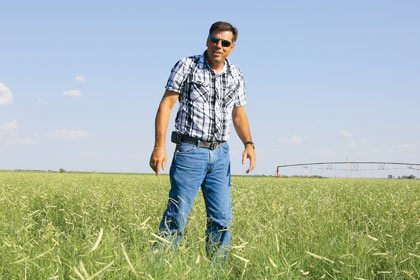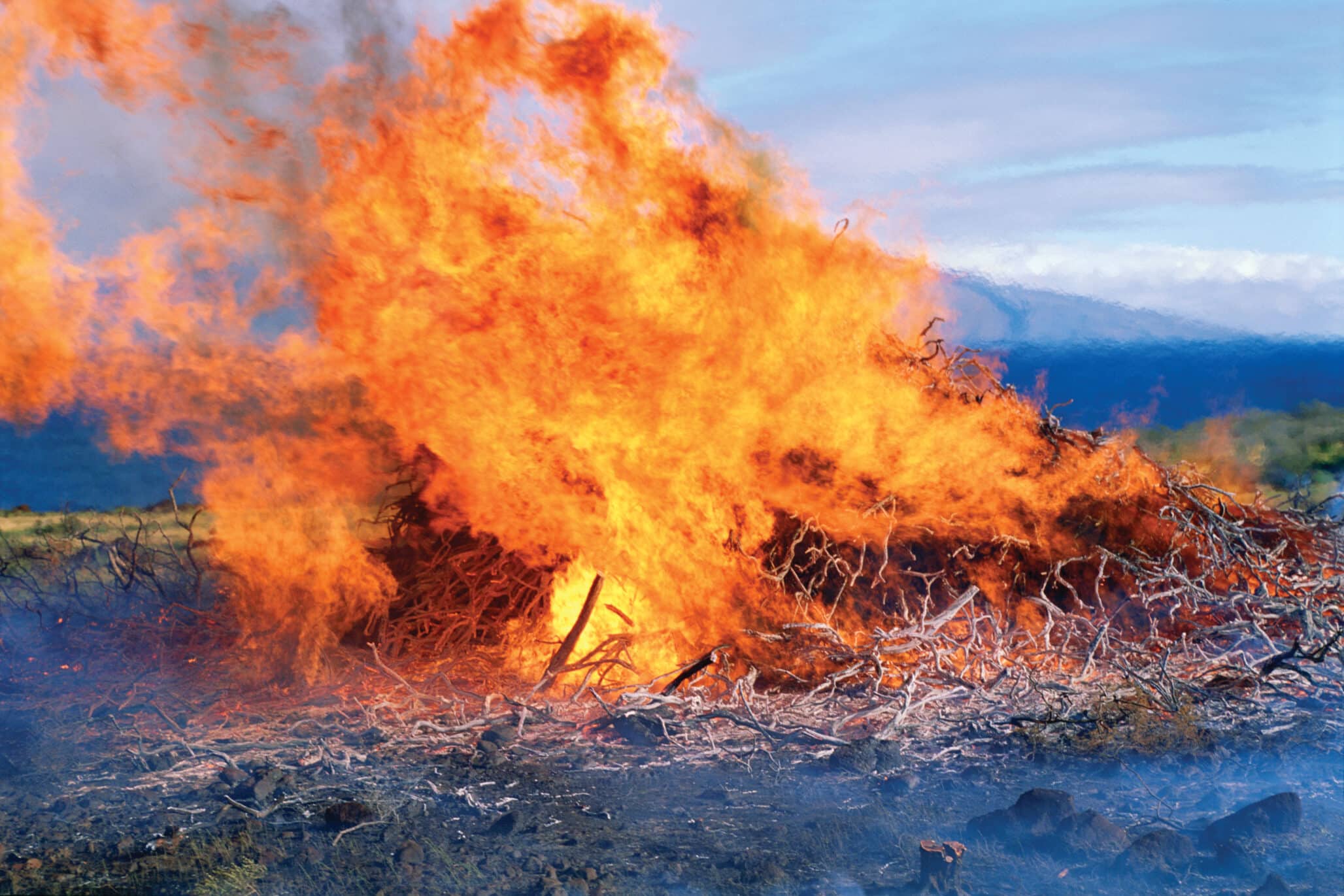When bringing seed to market, one native seed retailer gives new meaning to the 10,000-foot view.
Imagine flying over miles and miles of New Mexico’s brown and red soils at nearly 200 miles per hour, looking at shades of yellow, green, purple, maroon and blue grasses below.
That’s exactly where Blake Curtis of Curtis & Curtis Inc. prefers to spend his time, and is a critical component of the family’s native seed business.
“When I spot a native species that’s ready to be harvested, I find the nearest airport to land at and try to figure out who owns the land,” Curtis says. “Then I obtain a vehicle any way I can and go knock on the door and try to work out a deal with the landowner. More often than not we can work something out, and in a matter of days we bring in our harvesting equipment and are moving seed back to the warehouse for conditioning and cleaning.”
Curtis loves the thrill of finding a unique native seed, but he admits marketing it can be a real gamble. “You never know whether it’s going to be a poke in the eye or a real market,” says the fourth-generation New Mexican. “I’ve learned many lessons from the school of hard knocks. You can’t learn what subtle shade changes to look for or how to cut a deal with a landowner in the classroom—it takes years and years of experience.”
When selecting native seed, Curtis has to know how to read color, texture, environmental conditions and weather trends. He relies a great deal on local contacts and farmers for knowing the conditions in different regions.
According to Curtis, some of the seed in his warehouse is worth only a few dollars a pound while other varieties are worth $65 to 70 per pound.
“Our specialty has always been having a unique blend of seeds on hand to help people reclaim or rehabilitate land,” Curtis explains. “We pride ourselves on identifying a market and matching a product to meet needs. If we don’t produce it, we know where to find it.”
Blake Curtis loves the thrill of finding unique native seed; however, marketing it can be a gamble, he says.
Most of the time, the company sells perennial seed, Curtis explains, which means that every time they make a sale they have to locate a new customer.
Located in Clovis, N.M., CCI has 18 employees and was established in 1956. The company markets seed to many parts of the world. Curtis and his brother, Tye, run the operation. The two brothers grew up competing first with farm chores, and then in sports. Now, with desks positioned side by side, they have friendly trading competitions. “When we were in different offices and selling product, sometimes we would sell the same seed twice, and at the end of the day realized we needed to find product to supply our customers,” Curtis says.
While CCI’s focus is native seed species and legumes, the brothers also provide seed for local golf courses, parks, home lawns and industrial sites. Staples include Blue Grama, Side Oats Grama, Dropseed (Sand) and Buffalograss. Additionally, they provide a full line of sorghum products for the wholesale and retail market with an emphasis on forage sorghum, which are high-producing, drought-resistant and insect-tolerant varieties.
“You never know whether it’s going to be a poke in the eye or a real market … I’ve learned many lessons from the school of hard knocks.”
Strong Leadership
Curtis’ father worked for the Miller Seed Company, for which he traveled a great deal. He didn’t hesitate to pack the kids along, which exposed the Curtis brothers to many different aspects of business and other cultures. “My father never told me I had a bad idea, but instead told me I should think about it more or go research one of the components,” notes Curtis. “He challenged me to think through things and discover solutions when something wasn’t working. I owe a lot of my leadership style and success to him.”
Curtis also credits his employees with the business’ success. “We’re largely successful because of the people we have working for us,” Curtis says. “There’s a great work ethic in the region and we’ve got good people.”
Curtis says he works hard to instill a passion in what CCI employees are doing, whether that is working with customers or the environment. “We’re very goal-oriented and give lots of latitude for individuals to learn about the industry, move forward and learn the ins and outs of trading,” he explains. “We hope they bring this knowledge back to business, which allows us to continue to supply our growing customer base.”
Not only is Curtis a strong leader for CCI, but as the chairman of the American Seed Trade Association he oversees state, national and international policy as it relates to the seed industry and works to bring members together on specific issues.
“I could hardly wrap my mind around the breadth and diversity of issues that ASTA manages,” Curtis says. “I understood the diversity of seed, but not the issues of producing in the United States or selling seed around the world—issues I had never dreamed of, including intellectual property, genetic transfers, technology transfer and GM versus organic. The passion that fuels these discussions continues to amaze me.”
As he begins his role as ASTA’s chairman, steering the industry forward through the next year, there are many individuals Curtis can turn to for information. From alfalfa to zucchini, organic to biotech crops, leaders of this diverse group represent all sectors of the industry, and meet regularly to discuss issues such as patent expiration, intellectual property rights, and labeling and testing that needs attention.
Curtis has been working closely with the former chairman, Mike Gumina of Pioneer Hi-Bred, in finalizing and implementing ASTA’s new strategic plan, which will have measurable metrics for the organization.
A famous quote Curtis often refers to is, “If you don’t know where you’re going, any road will take you there.”
And if the road doesn’t exist yet, you can always take to the skies and chart your own course.
Editor’s Note: Julie Douglas is the director of communications for the American Seed Trade Association.
|
Native Nuggets Blue Grama (Bouteloua gracilis) is a long-lived, warm season grass found throughout the southwest and the Western Great Plains. It is densely tufted and grows from six to 24 inches with gray-green, basal leaves. Thriving in medium- to fine-textured soils, it forms in bunches, but can be sod-like at higher elevations or when closely grazed. It’s highly palatable and considered a choice forage for all classes of livestock. A pound of Blue Grama is about 712,000 seeds. Buffalograss (Buchloe dactyloides) is a native, warm season, sod-forming, short grass of the Great Plains. It spreads by surface runners or stolons and is best suited for medium- to fine-textured soils. Considered a special purpose grass for seeding waterways and depleted clay upland sites where erosion is paramount, it’s usually found in low, marshy areas and depressions. The seed is often sold in the form of burs, which are easily handled and drilled. A pound of Buffalograss is about 40,000 burs or about 275,000 seeds. Sand Dropseed (Sporobolus cryptandrus) is a widely-distributed bunchgrass common on sandy sites throughout the West. Though its palatability is low, it provides fair winter forage. Sand Dropseed is a prolific seed producer and increases on depleted ranges and on Side Oats Grama (Bouteloua Curtipendula) is also a long-lived, warm season grass. Primarily found east of the Rocky Mountains, its height ranges from 12 to 36 inches and stands erect from dense tufts or sod patches. Side Oats are adapted to a wide range of soil and climatic conditions, but prefer a medium- or course-textured soil. On shallow calcareous soils, it may become the dominant species. A pound of Side Oats is about 143,000 seeds. |













